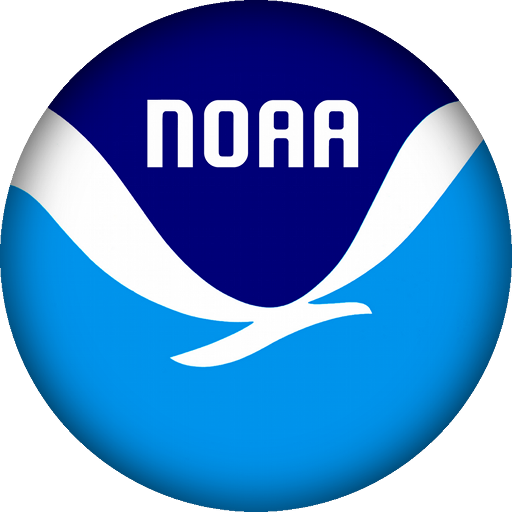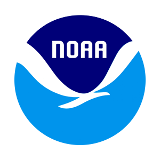| Home | | | Schedule | | | Local Info |
| Linking Data Visualization to Societal Benefits |
| Session Time | January 9th; 10:30 am to 12:00 pm | |||
| Location | Salon E | |||
| Description | NOAA produces terabytes of data, and the challenge is to make that data accessible
to decision support systems by decision-makers in ways that are useful for their needs. Data visualization offers a
solution for making data more useful because visualization allows us to identify patterns, trends, and correlations
that might otherwise go unnoticed. We propose a session with a series of talks that demonstrate the data value chain
from development, societal benefits and use. Dr. Monica Grasso, NOAA's Chief Economist will moderate the session.
This session will serve as the beginning of a broader conversation at NOAA about how to use data visualization, and as an opportunity to encourage participants to join a Data Visualization Community of Practice that is in its early stages. |
|||
| Chair | Dr. Monica Grasso or Jeff Adkins | |||
| Presentations and Notes | Click Here! | |||
| Talk | Length (min) | Title | Presenter |
| 2A.1 | 12 | Using Data Visualizations to Tell NOAA's Story | Denna Geppi |
| 2A.2 | 12 | Enabling Event-Driven Data Discovery | Aaron Sweeney |
| 2A.3 | 12 | Developing User Tools for Integration and Visualization of Multidisciplinary Coastal and Ocean Data | Rob Bochenek |
| 2A.4 | 12 | Designing Visualizations and User Interfaces That Reduce Noise and Increase Understanding | Dan Pisut |
| 2A.5 | 12 | User Driven Data Mining, Visualization and Decision Making for NOAA Observing System and Data Investments | Matthew Austin |
| 2A.6 | 12 | Using Environmental Big Data to Improve Outcomes | Michelle Lapinski |
| 2A.7 | 12 | How Does Data Get From the Source to the End User? Old School vs New School | Bob Simons |
| 2A.8 | 6 | Open Discussion | |
| Abstracts | |||
| 2A.1 | Using Data Visualization to Tell NOAA's Story
Denna Geppi (CFO/Office of Performance, Risk and Social Science) Jeff Adkins, Valerie Were, Rajendra Poudel |
||
| Social Science is integral to achieving NOAA's goals. The strategy of the Social Science team is to integrate social, behavioral, and economic (SBE) science end-to-end in NOAA's mission and priorities. In order to do that, we must articulate and communicate the societal benefits generated by NOAA's science, service, and stewardship activities to NOAA leadership and to decision makers. One of our major challenges has been getting a natural science agency to fully embrace and integrate social science in their operations to better relay the societal impacts of the agency's work. Through Data Visualization, we are finding more effective ways to tell our story. This talk will discuss how the Social Science team is starting to use data visualization to communicate the societal benefits of our work linked to all of NOAA priorities. | |||
| 2A.2 | Enabling Event-Driven Data Discovery
Aaron Sweeney (NESDIS/NCEI) Paula Dunbar (NCEI), Nicolas Arcos (NCEI) |
||
| People naturally want to learn more about potential impacts to their lives. At the National Centers for Environmental Information (NCEI), we inspect and archive multiple sources of information regarding natural hazards, especially tsunamis. We have developed a visual aid to data discovery related to specific tsunami events using a timeline. The timeline is created using an open-source Javascript library (TimelineJS) originally designed for news stories. The timeline depends on information expressed in Javascript Object Notation (JSON) format. The approach is quite flexible, using images to draw the reader's attention and providing linkages to multiple data sources for further exploration. We initially focused on data and products that we steward at NCEI. We'll discuss how this approach might be extended to data held by other entities. See this link. | |||
| 2A.3 | Developing User Tools for Integration and Visualization of Multidisciplinary Coastal and Ocean Data
Rob Bochenek (Axiom Data Science LLC/IOOS) Derrick Snowden (NOS/IOOS) |
||
| The presenter of this talk will demonstrate a suite of discovery and visualization tools that have been developed to improve the communication of ocean data and information products to the broader user base. The presentation will begin with a brief summary of the architecture and approach to support the integration of a wide breadth of data types (sensors. model/remotely sensed grids, GIS, time series and project/field study data) and domains (geophysical, ecological and socioeconomic). The techniques described here form the foundation for the cyber infrastructure that supports three of the eleven US IOOS regional associations and several national data integration systems funded through the centralized IOOS office. The talk will then showcase a series of modern spatial/temporal visualization techniques developed to improve accessibility to complex scientific ocean and coastal data sets. Additionally, examples of cyber infrastructure, developed with funding from NOAA and others, will be demonstrated which enable data resources (GIS, numerical models and remote sensed grids, sensor networks, time series and research project assets) to be discovered, integrated and visualized. | |||
| 2A.4 | Designing Visualizations and User Interfaces That Reduce Noise and Increase Understanding
Dan Pisut (NESDIS/Visualization Lab) |
||
| With the ubiquity of software and toolkits, creating data visualizations and user interfaces can be done by almost anyone. However, all too often we inject unintentional flaws into our designs that weaken the veracity or make navigation less straightforward. This talk will focus on addressing some of these pitfalls and provide solutions that use best practices from cognitive and social science all with the goal of making a better connection to your end user. | |||
| 2A.5 | User Driven Data Mining, Visualization and Decision Making for NOAA Observing System and Data Investments
Matthew Austin (NESDIS/OPPA/TPIO) Sabrina Taijeron (NESDIS TPIO), Lauraleen O'Connor, Brant Priest (NESDIS TPIO), Adam Neiss (NESDIS TPIO), Rohit Arora (NESDIS TPIO) |
||
| The National Oceanic and Atmospheric Administration (NOAA) observing system enterprise
represents a $2.4B annual investment. Earth observations from these systems are foundational to NOAA's mission to
describe, understand, and predict the Earth's environment. NOAA's decision makers are charged with managing this
complex portfolio of observing systems to serve the national interest effectively and efficiently.
The Technology Planning & Integration for Observation (TPIO) Office currently maintains an observing system portfolio for NOAA's validated user observation requirements, observing capabilities, and resulting data products and services. TPIO performs data analytics to provide NOAA leadership business case recommendations for making sound budgetary decisions. Over the last year, TPIO has moved from massive spreadsheets to intuitive dashboards that enable Federal agencies as well as the general public the ability to explore user observation requirements and environmental observing systems that monitor and predict changes in the environment. This change has led to an organizational data management shift to analytics and visualizations by allowing analysts more time to focus on understanding the data, discovering insights, and effectively communicating the information to decision makers. Moving forward, the next step is to facilitate a cultural change toward self-serve data sharing across NOAA, other Federal agencies, and the public using intuitive data visualizations that answer relevant business questions for users of NOAA’s Observing System Enterprise. Users and producers of environmental data will become aware of the need for enhancing communication to simplify information exchange to achieve multipurpose goals across a variety of disciplines. NOAA cannot achieve its goal of producing environmental intelligence without data that can be shared by multiple user communities. This presentation will describe where we are on this journey and will provide examples of these visualizations, promoting a better understanding of NOAA’s environmental sensing capabilities that enable improved communication to decision makers in an effective and intuitive manner. |
|||
| 2A.6 | Using Environmental Big Data to Improve Outcomes
Michelle Lapinski (The Earth Genome/VP) |
||
| All of the world's most influential decision makers are potential users of environmental data, but today the use is limited. Why? They lack an easy way to integrate data, science and visualization to help them evaluate the impacts (social, environmental and financial) outcomes of their own decisions. Today that all feels too hard. At Earth Genome, our vision is for the world's key decision makers to consistently and routinely take into account the full value of nature and the consequences of their activities on natural systems, thereby averting economic and social disruptions due to the mismanagement of natural capital and environmental risk. We build on data, applied science, and the latest in GIS visualization to create highly visual decision-support tools that help businesses and governments evaluate how solutions/interventions could be applied on a greater scale to improve real outcomes on the ground. We are working with companies and governments to provide an assessment of place-based and temporal science of natural resource challenges ranging from securing water supply to increasing agricultural yield while improving environmental or social conditions. This presentation will include a demo of the Green Infrastructure Support Tool that enables evaluation of green infrastructure solutions to address water quantity issues (being piloted by Dow Chemical in their largest global facility, located in Freeport Texas) and a preview of the under development Groundwater Recharge Assessment Tool that will enable California irrigation districts to optimize investments in groundwater recharge. Both tools draw on NOAA datasets, and enable end users to take into account the impacts of their own decisions. These apps are part of Earth Genome's broader efforts to increase the availability and usefulness of planetary data for decision-making through a data/tool platform that exponentially lowers the cost and time to analyze data and translate it into implementable insights. | |||
| 2A.7 | How Does Data Get From the Source to the End User? Old School vs New School
Bob Simons (NMFS/SWFSC ERD) |
||
| This talk will contrast the old school systems for data distribution, which are still widely used, and the new systems, which can be tremendously easier to use and more efficient. The new systems offer catalogs to make the datasets discoverable, web services to make the actual data accessible and subsetable, and improved metadata to make the data understandable and usable. The federal government's PARR requirements mandate that all government funded data be made freely available via these new systems. | |||
| Top of the Page |


